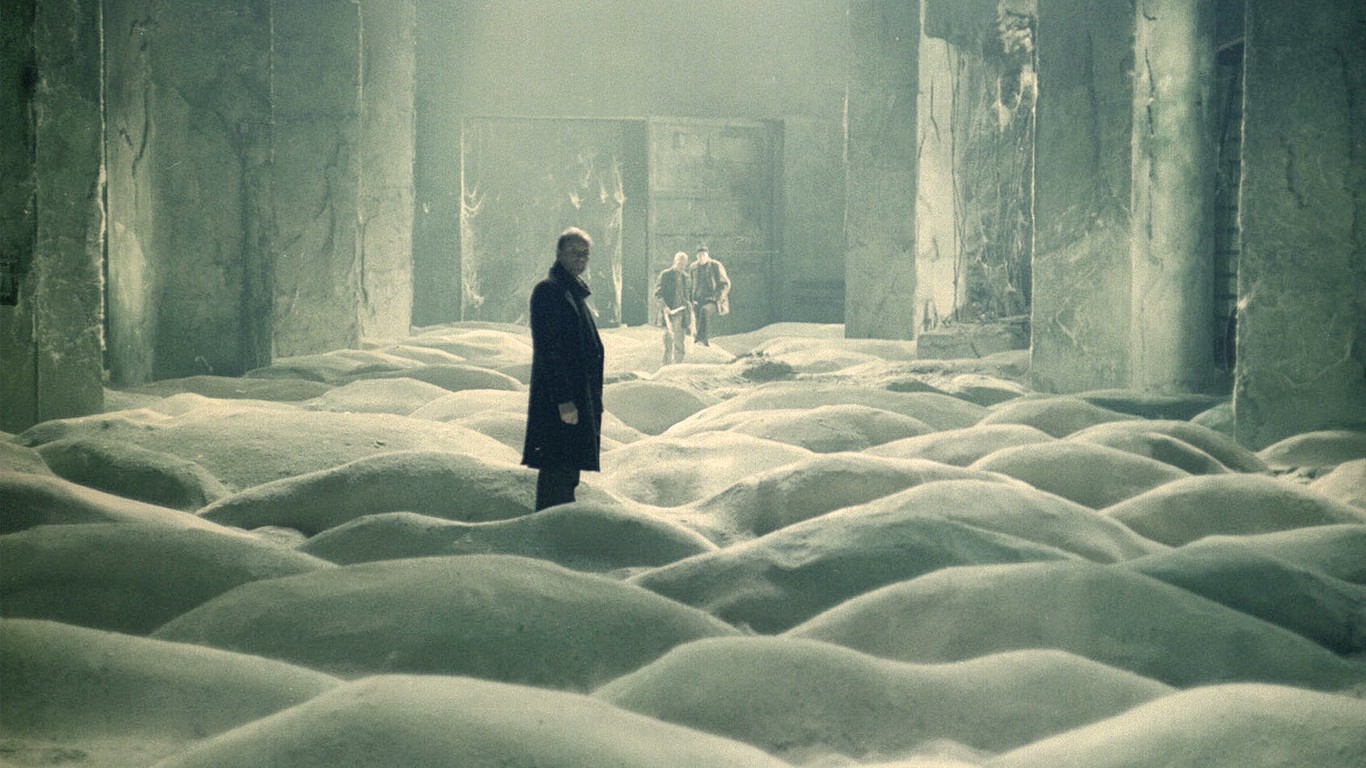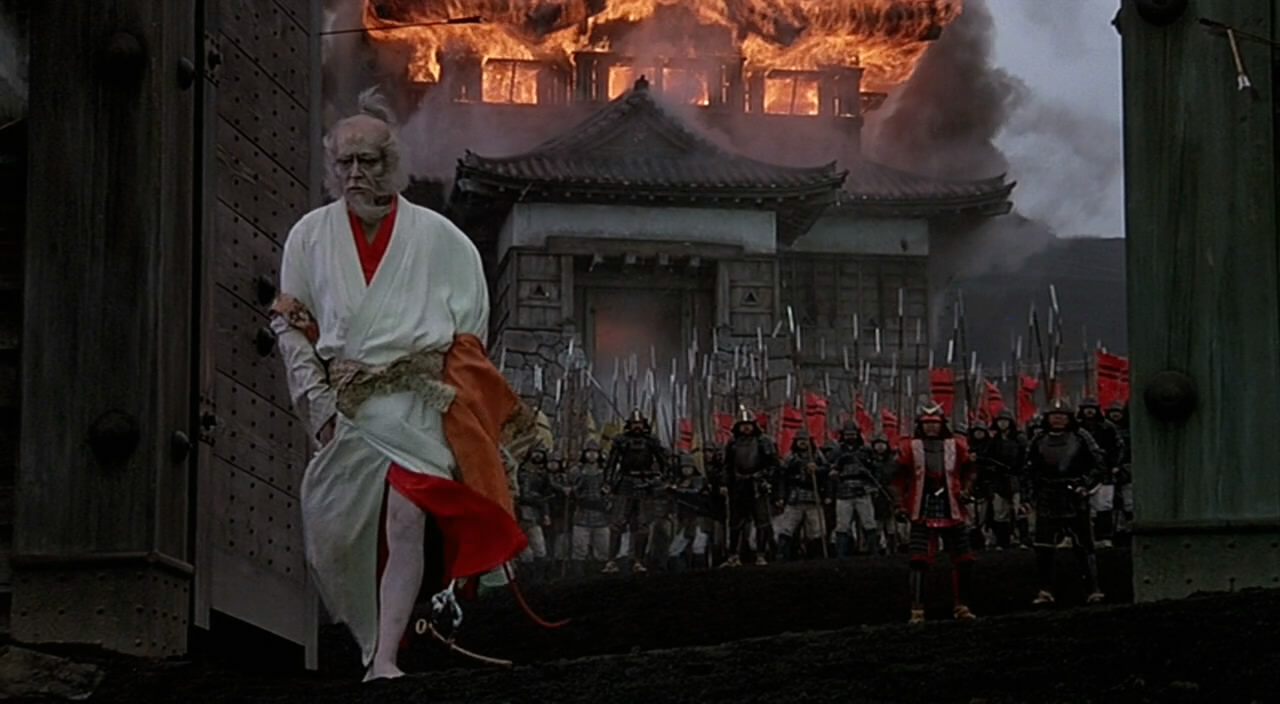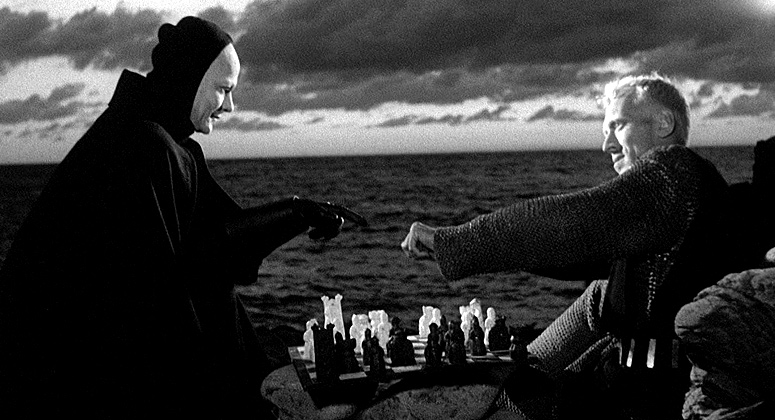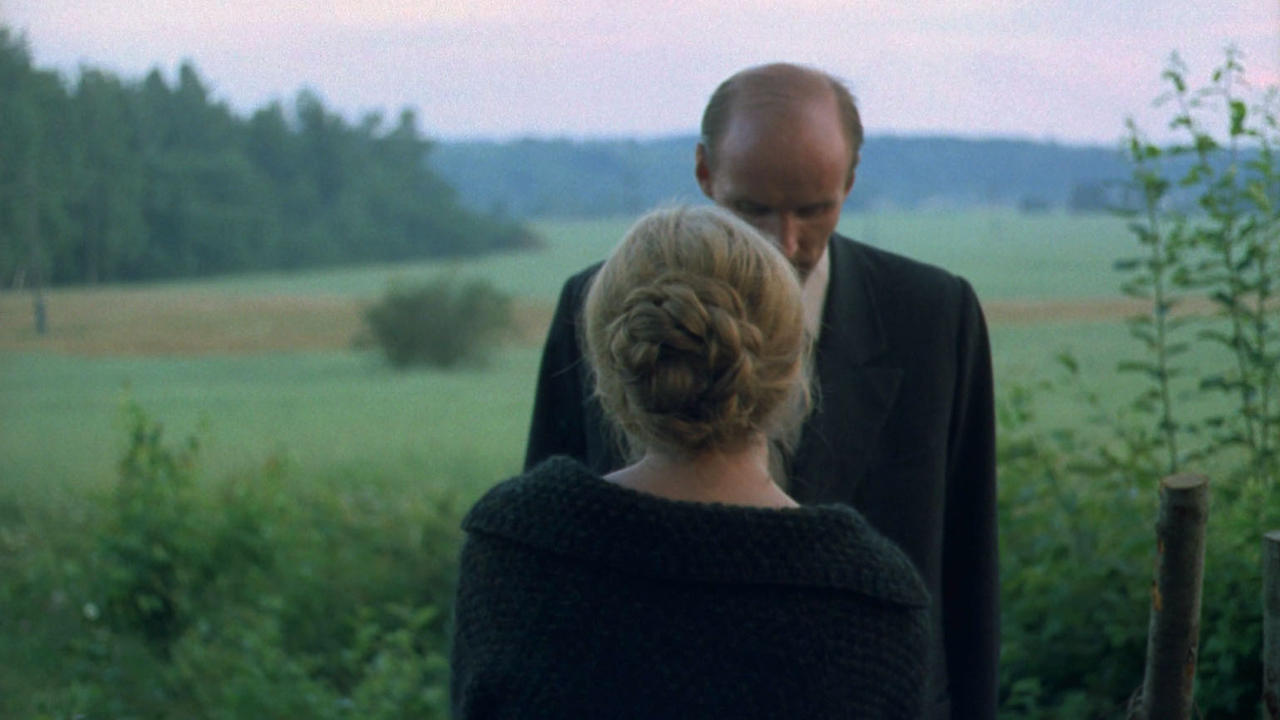7. The Night of the Hunter (1955)

“The Night of the Hunter” is one of the most hauntingly beautiful noir films; or, more aptly, it’s a dark, visionary fairy tale that refers to the Depression era without lacking in hints on timeless abominable human conditions. The exquisite cinematography was accomplished by Stanley Cortez, twice nominated for an Academy Award.
A murderous opportunist finds out during his prison time that the wife of a convict on death row owns a property in cash. After rejoining society, he marries the easily victimized widow, disguised as a priest. Soon, he discovers that her two little children should be the target. Thus, he turns up his vicious character and murders the unfortunate woman.
The children escape on a boat from their riverside home and quite so, a magnificent but nightmarish scene arises. The brother and sister helplessly travel on their small boat along the river and spend the night in a shelter for animals, chased by their enemy.
The moon rising is ensued by the moon setting, while the devil is following their path like a black shadow on a horse. A gentle female voice is singing: “Hush little one, hush, rest dearest one, rest.” The emotions provoked by this scene are indescribable.
6. Stalker (1979)

Andrei Tarkovsky’s surrealistic environments represent a lot more than allegorical reflections of reality. Tarkovsky gives the impression of having entirely comprehended the features constructing the murky intellectual entity that is called “subconscious” by humans. In his film “Stalker,” he makes a projection of the upside-down aspect of several humane thoughts and visions.
Three men called Stalker, Pisatel and Professor are traveling to a place where wishes come true, moving forward into a fictional universe called “Zone.” The three men could possibly be three different subliminal manifestations of Stalker, who appears as their leader. Throughout this navigation into the labyrinths of Zone, deep philosophical inquiries about the scope and potentiality of existence are engendered.
Probably the most delightful scene rising in the hypnotizing land of Zone is the one depicting the protagonists passing through the “Meat Grinder” tunnel. This tunnel includes essential elements of reality. The ground is covered by sand dunes and water drops produce natural sounds.
In the midst of Mead Grinder, Professor feels more in touch with his mental flaws than ever. He expresses his frustration for lacking constant inspiration and realizes his limited existence against eternity. This passage could portray a human’s physical and spiritual path through life.
5. Ran (1985)

In several of Akira Kurosawa’s works is the deep-seated introspection into dominion and its impact on ethics and objectivity. Frequently, his settings and psychology compositions indicate a conspicuous influence by ancient Greek drama and Shakespeare. His film “Ran” is an artistically breathtaking piece, dealing with such subjects of archaic origination.
The lord of a medieval Japanese city, who hasn’t been incorruptible all through his political career, decides to hand authority to his three sons. Although he pointed out the necessity of unity to his sons in order to maintain the strength of their castle, all of them use their recently received power so as to satisfy personal pursuits. Thus, the occurring internal disputes resulted in the ideal circumstances for external attacks.
Quite so, the castle faces an offense. As the two opposing armies clash, the unfolding scene is bitter to the bone and simultaneously visually fascinating. The lord sits firm in his castle, watching his men’s blood spreading over the whole surface and his acquired life treasures burning away. Suddenly, he decides to take action; he looks around him to find a weapon, but it’s vain. He realizes his defeat.
In a state of suspended animation and with empty eyes, the lord exits his blazing castle, carrying out a dramatic course through the soldiers. Even if he has committed terrible acts in his life, the feelings of sympathy for his current situation are unavoidable. He had been blinded by the devious beast of power. This scene, as synthesized by optical and contextual elements, is insuperable and reveals Kurosawa’s visual art education.
4. The Seventh Seal (1957)

“The Seventh Seal” moves through the labyrinths of Bergman’s unique fantasy sphere, visiting the highest mountaintops of the human spiritual lands in order to look upon inherent vices, material perishability, religion, and death. This gemstone of the seventh art proves that evil and virtue are two sides of the same coin. At heart, mankind intends to satisfy its primal mental need of eternal existence and dominion in multiple altruistic and harmful ways.
The iconic scene depicting a chess game between the Grim Reaper and a knight is a sarcastic response to the metaphysical inventions having the purpose of disguising the humane impermanence. This chess game remains incomplete. A negotiation between a man and his inevitable fate could never finalize in terms of common sense. When the knight confesses to a priest, he doesn’t realize that the priest is death itself.
This beautiful scene, in its high black-and-white contrast, calls to mind that even if people attempt to negotiate their rights with death, he is going to take away all of them, while the oceans and skies will continue existing in their natural serenity.
3. Citizen Kane (1941)

Even if someone attempts to watch “Citizen Kane” in mute mode, the sequence of its stunning, dreamy moments will be able to narrate the story, or at least reveal the evolution of Kane’s psychology. Orson Welles’ first and insuperable feature has been a cornerstone for the foundation of cinema, providing inspiration from a technical viewpoint and even more, reminding of the locked deeply in the heart – “Rosebud.”
The predominant scenes in relation to their visual value in “Citizen Kane” are numerous. “Contre-jour” lightning occurring by a beam of light pouring gently into the rooms, deep focus technique resulting in multileveled pictures, and unusual camera angles are some of the elements engendering the unique beauty of this film. Nevertheless, the opening scene is breathtaking in its ambient mood and artistic complexity.
2. Barry Lyndon (1975)

“Barry Lyndon,” one of Stanley Kubrick’s masterpieces, is probably the most visually inspirational. Observing the dramatic life of Barry Lyndon, a man who is neither a hero nor an antihero, the spectator will watch this film again and again so as to experience the pleasure stemming from its incomparable artistic beauty.
The film’s masterful cinematography has generously engendered plenty of fascinating moments, challenging the instated limits of the visual esthetic standards. Optical adequacy flows from brilliantly depicted 18th century settings, detailed long shots, dramatic close ups, and much more.
Nevertheless, there is one prevailing scene in “Barry Lyndon.” Barry is a former naïve country man, chasing fortresses, power and social status. Even though his morality is getting more and more paralyzed, there is something unsurpassed in Barry’s distorted heart: his child. After his son’s death, Barry is left emotionally distraught and drinks until his death. He is sunken into an armchair, accompanied by other people also used up by alcohol.
This scene is distinguished by the beauty of an academic painting. The colors, the positions, the expression of every person turned toward a different direction, even details like a fallen chair and an empty bottle on the floor, synthesize a picture that could be found in a museum.
1. The Mirror (1975)

“The Mirror” is an optical poem referring to those who nourish in their souls an undimmed feeling of nostalgia for their unprecedented emotions, childhood and parental figures. A man, right before his premature death, places his lifetime experience in front of a mirror and watches in an unconventional row the catalytic events and beloved memories of his growth.
The cinematography of this film by Andrei Tarkovsky’s is exceptional, especially in relation to the use of color. The older the memories are, the more faded are the colors. In combination with the allegorical sense of realistic settings, this brilliant technique takes the path of real time and even more, creates an emotional crescendo.
In the protagonist’s chest of memories nest various valuable moments, tinged with the magic of sentimentalism. Even if all of them are touching, one is prevailingly heartwarming. A remembrance of his mother allows her to soar at a distance above her bed, like an ethereal creature, untouched by this nature’s rules. Nothing could be more idealized in the mind of a moribund man, compared to the gentle figure of the woman who brought him to life.
Author Bio: Marillie Damoulianou is a Geologist from Greece. She’s also a cinema lover, with special preference to the European film movements.